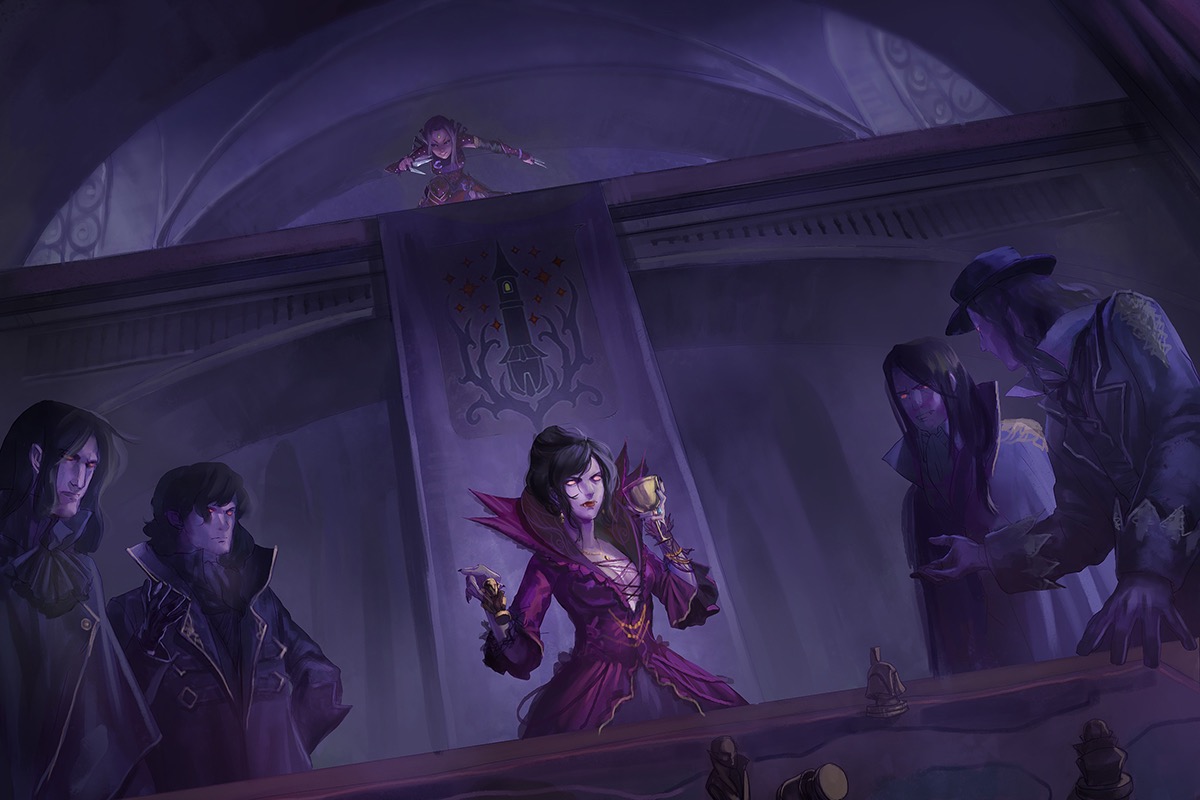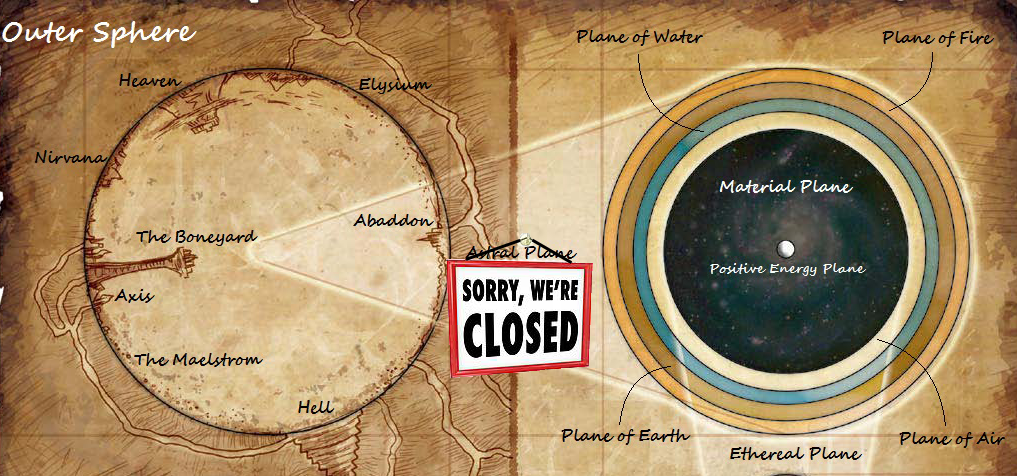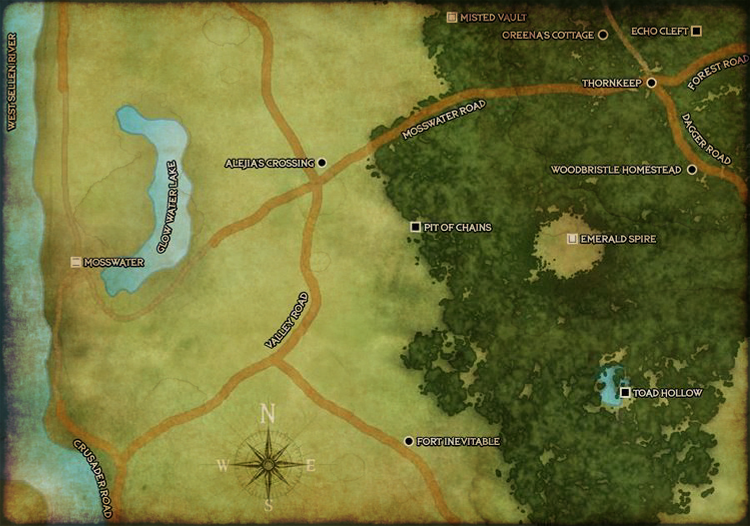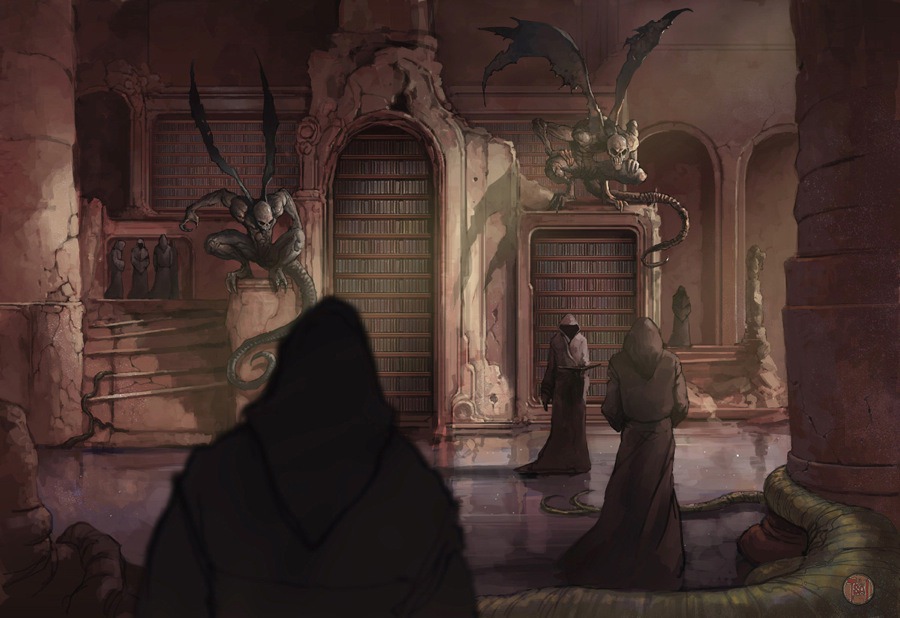Greetings, fans of Golarion Lore! This week we’ll be extrapolating from the premise we pulled from the Lost Omens World Guide last time: Since the Whispering Tyrant’s escape, refugees from the former nation of Lastwall are flooding into Ustalav. What does this means for Golarion, and how can you use it in your campaign?
Last time, we looked at how this one event suggests an interesting mash-up for a campaign: the hexploration and settlement of the Kingmaker AP, but transplanted to Ustalav. While many of the more traditional counties of Ustalav would probably just close the borders again and let the refugees fend for themselves (as they did to refugees from Sarkoris during the Demonskin War), the more enlightened Palatinates would probably try to find a better solution.
So, new lands must be claimed, and thousands of refugees relocated and resettled. What are the options?
North to Numeria
North of Ustalav lies Numeria, which is experiencing turmoil of its own. With the fall of the Technic League (as told in the Iron Gods Adventure Path), the nominal ruler is just beginning to recover. The black Sovereign, Kevoth-Kul, has thrown off his addiction to Numerian fluids (as described in Lost Omens: Legends) but his rule still extends only as far as his reach… which isn’t far. Various local Kellid groups have effectively claimed independent territories and some land could be carved out in between these groups. However, old-world colonization of indigenous lands doesn’t seem to match the Platinates’ goals. Besides, these lands are all the way across Ustalav from where the refugees are arriving, which makes for a LONG walk. So, I think the Palatinates will look elsewhere for lands for their new Palatine county.
River Kingdoms and Razmir
To the east of Ustalav lie the various tiny realms of the River Kingdoms. The political boundaries here change almost as often as the geography as the Sellen River meanders north, and so a change of ownership wouldn’t cause much of a fuss internationally. While little is given about the River Kingdoms in the Lost Omens World Guide, they did receive a full treatment in the First Edition product Guide to the River Kingdoms. According to that ancient lore (which describes Golarion a mere 15 years ago), there are several one-settlement “kingdoms” just across the river from Ustalav that might serve as good locations to relocate the refugees to, and make interesting campaign scenes to boot.
Mosswater and Scrawny Crossing are a pair of abandoned villages which were wiped out by scary aquatic monsters from the river – that sounds like an epic adventure for our exploring heroes, and results in two villages worth of New Ustalav right on the border. Farther south is the realm of Lambreth, which according to the lore is run by a pretty nasty tyrant. Vanquishing Lord Arnefax and his Black Eagles and reclaiming the lands he exploits could fill an entire AP volume with some great adventure, with everything from espionage to mass combat.
The Echo Wood is an interesting area. Initially it would have been a perfect location for this sort of campaign, but then both Thornkeep and the Emerald Spire were dropped into that area. One the one hand, this can provide a lot more pre-existing content for your campaign if you choose to use these elements. On the other hand, you can always assume that adventurers have cleaned out both of these mega-dungeons and treat them either as empty or just beginning to be repopulated.
While these lands are also quite far from the refugees pouring in from the west and south, much of that journey could be made by sea, via ship from Caliphas and then up the Sellen River.
A complicating factor to any plan to conquer the River Kingdoms is the once-Arch-Duchy of Melcat, today known as Razmir, land of the Living God. The Living God has forged a non-aggression pact with the Whispering Tyrant, making them complicated neighbors for anyone to deal with. Razmir has tried expanding into Ustalav before, and if they see Ustalav heading east they may race into the River Kingdoms as well to grab what they can in the chaos. Besides, rumor has it that Razmir is sending its dead to the Whispering Tyrant as tribute, and so a splendid little war on the borders may be just the thing to ensure that the supply of corpses doesn’t run dry. Even the Living God has no wish to go back on a deal with Golarion’s most powerful lich. On balance, a Kingmaker-style campaign expanding east from Ustalav into the River Kingdoms, funded by the Palatinates of Ustalav with Razmir as a wild card, is both a fun-sounding campaign as well as a logical extension of the state of the world and the lore of the region, with roots thousands of years in the past.
The Wild Card
There is one more option to consider, though, based on one of the big lore changes from First Edition to Second Edition lore. In First Edition, trying to settle any part of the Hold of Belkzen, homeland of the orcs, would have been suicidal. However, today’s orc nations are not in league with the Whispering Tyrant, but actively oppose him. The current leader, Ardax the White-Hair, has reached out to various nations with offers to expand trade and cooperation. Would the orcs agree to re-home a flood of largely-human refugees fleeing the undead? Would the refugees be able to accept the orcs as allies after fearing them for so long? Some really interesting dynamics could occur with a campaign that takes the first steps of alliance between the Palatinates and the Hold of Belkzen. Perhaps the orcs would even cede some land to Canterwall in order to establish an ally against the Whispering Tyrant?
This is where the lore runs out and your game takes over. Do the Palatinates and Belkzen become allies, each sharing the best of their culture with the other? Or do the powers that be decide to keep any new conflict at arms length, over in the River Kingdoms, even though it may rouse the ire of the Living God? I know which way I’m planning my campaign, but I’d love to hear of anyone else who tries this idea out.
Next time, we’ll take a look at the time frame that all of this lore has taken place against, and see what that can tell us about the cultures and nations of Golarion. Until next time!






